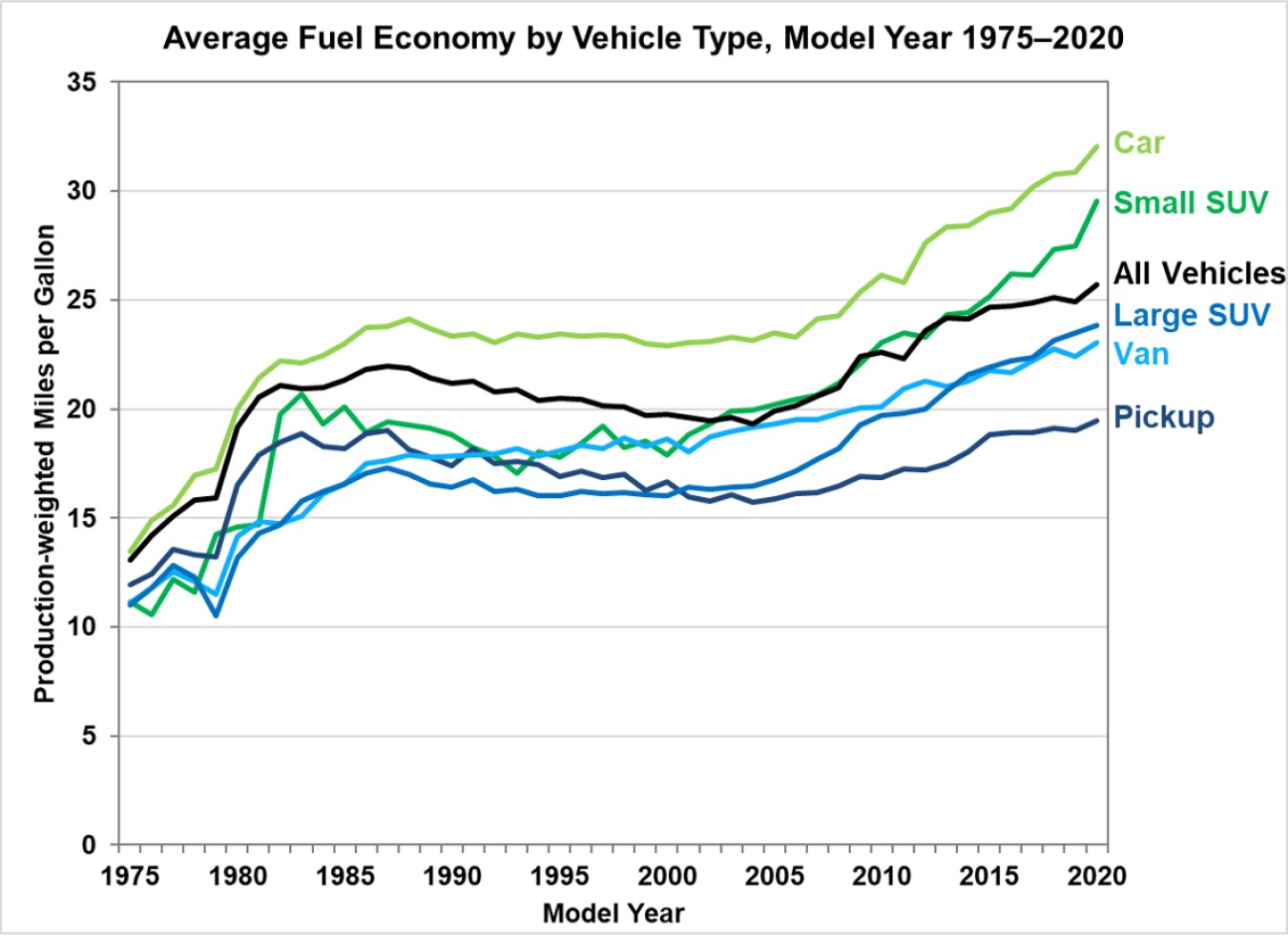The 2020 EPA Automotive Trends Report shows the production-weighted fuel economy for new light-duty vehicles from 1975 to 2020.
July 19, 2021The 2020 EPA Automotive Trends Report shows the production-weighted fuel economy for new light-duty vehicles from 1975 to 2020. While the average fuel economy for all new vehicles has nearly doubled over that timeframe, the fuel economy for small SUVs has increased by 165%, from 11.1 miles per gallon (mpg) to 29.5 mpg. Following a period of stagnation, the fuel economy for all vehicle segments improved from 2000 to 2020. The small SUV segment also improved the most since 2000, with fuel economy increasing 65% from 17.9 mpg to 29.5 mpg. Fuel economy for pickups showed the least improvement of any segment, but still increased by 63% from 1975 to 2020, from 11.9 mpg to 19.5 mpg.

Notes:
- Data for 2020 are preliminary./li>
- Small SUVs are the same as EPA’s Car SUV category; Large SUVs are the same as EPA’s Truck SUV category. Refer to listing of vehicles classified as small SUVs. The fuel economy data in this table are adjusted to provide the best estimate of real-world performance.
- Data include pickups, vans, and truck SUVs less than 8,500 lb. Beginning with 2011, truck SUVs and passenger vans up to 10,000 lb. were also included.
Source: U.S. Environmental Protection Agency, The 2020 EPA Automotive Trends Report, EPA-420-R-21-003, January 2021.

